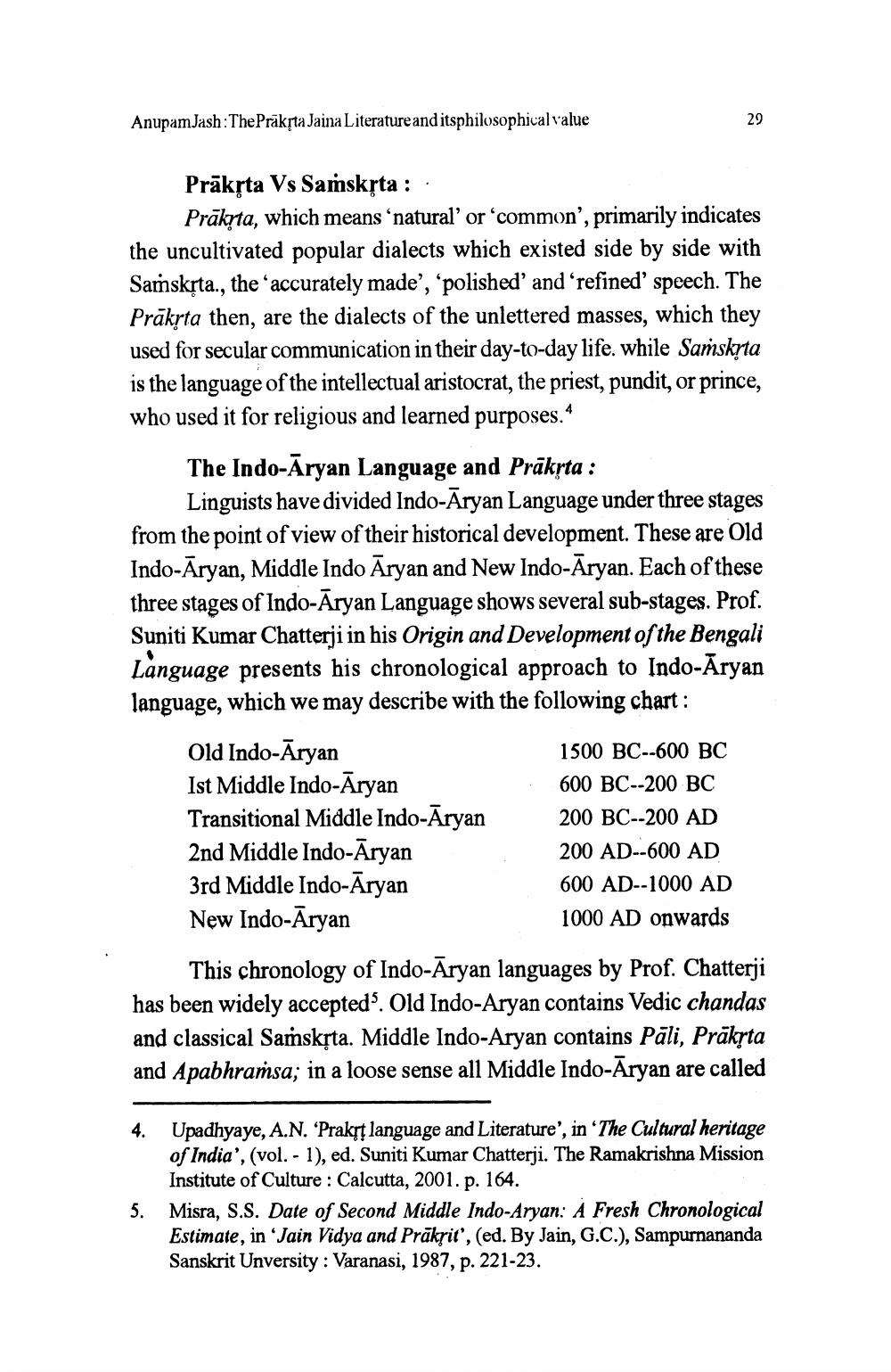________________
AnupamJash: The Prakṛta Jaina Literature and itsphilosophical value
Prākṛta Vs Samskṛta:
Prakyta, which means 'natural' or 'common', primarily indicates the uncultivated popular dialects which existed side by side with Samskṛta., the accurately made', 'polished' and 'refined' speech. The Prakṛta then, are the dialects of the unlettered masses, which they used for secular communication in their day-to-day life. while Samskṛta is the language of the intellectual aristocrat, the priest, pundit, or prince, who used it for religious and learned purposes.^
The Indo-Aryan Language and Prākṛta :
Linguists have divided Indo-Aryan Language under three stages from the point of view of their historical development. These are Old Indo-Aryan, Middle Indo Aryan and New Indo-Aryan. Each of these three stages of Indo-Aryan Language shows several sub-stages. Prof. Suniti Kumar Chatterji in his Origin and Development of the Bengali Language presents his chronological approach to Indo-Aryan language, which we may describe with the following chart:
Old Indo-Aryan
Ist Middle Indo-Aryan
Transitional Middle Indo-Aryan
4.
29
2nd Middle Indo-Aryan
3rd Middle Indo-Aryan New Indo-Aryan
1500 BC--600 BC
600 BC--200 BC
200 BC--200 AD
200 AD--600 AD
600 AD--1000 AD
1000 AD onwards
This chronology of Indo-Aryan languages by Prof. Chatterji has been widely accepted. Old Indo-Aryan contains Vedic chandas and classical Samskṛta. Middle Indo-Aryan contains Pāli, Prākṛta and Apabhramsa; in a loose sense all Middle Indo-Aryan are called
Upadhyaye, A.N. 'Prakrt language and Literature', in 'The Cultural heritage of India', (vol. 1), ed. Suniti Kumar Chatterji. The Ramakrishna Mission Institute of Culture: Calcutta, 2001. p. 164.
-
5. Misra, S.S. Date of Second Middle Indo-Aryan: A Fresh Chronological Estimate, in Jain Vidya and Prakrit', (ed. By Jain, G.C.), Sampurnananda Sanskrit Unversity: Varanasi, 1987, p. 221-23.




